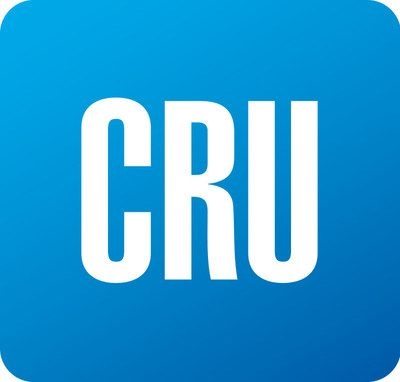Market

April 16, 2024
CRU: LME aluminum consolidates gains after news of sanctions
Written by CRU
The LME 3-month price is broadly stable April 16 and was last seen trading at $2,535 /t. On the morning of April 15 the LME reached a high of $2,727 /t, but quickly reversed these gains to finish the day flat. The move suggests the market remains uncertain about the potential bullish impact of new sanctions.
SHFE aluminum moved down quite sharply April 16 in what looked to be some profit taking after a week marked by strong gains. The cash contract first settled at RMB20,370 /t and last traded at RMB20,150 /t, down over 3% on the day.
EA and Rusal react to the new sanctions
The European aluminum association, European Aluminium, Tuesday published a statement following the new sanctions imposed on Russian aluminum. The association welcomes the sanctions and urges the EU to take comparable actions.
European Aluminium notes that failure to do so would leave the EU in “the bizarre position of being alone among Western powers in continuing to finance Russian aggression through the purchase of aluminum”. Doing nothing also would undermine the competitiveness of European producers the association said.
“The risk of the EU market being flooded with products from third countries, produced using heavily discounted Russian metal, is greater than ever,” the EA warned before adding: “Failure by the EU to react decisively to these latest developments would be an ethical, strategic, and economic disaster that Europe simply cannot afford.”
Rusal also reacted to the news by downplaying the impact of the sanctions on its activities.
“Rusal will remain capable of providing hedging services to our customers and remains committed to market-based pricing,” the company said before adding that these actions will have no impact on its ability to supply since Rusal’s global logistic delivery solutions, access to the banking system, overall production, and quality systems are not affected.
Rusal also notes that the U.S. determination does not impose any new prohibitions or requirements relating to the processing, clearing or sending of payments by any intermediary banks. Also, it stressed the LME acknowledgment that a still large proportion of the market is willing to take delivery of Russian aluminum.
Chinese primary production up amid restarts in Yunnan
Primary production in China in March 2024 totalled 3.59 Mt, the National Bureau of Statistics reported today, showing a y/y increase of 7.4%; while production from January to March amounted to 10.69 Mt – a y/y increase of 6.8% compared to the same period last year.
On annualized basis, this comes to a rate of 42.38 Mt/y, which is slightly up from 43.31 Mt/y in February. As for CRU’s estimation of Chinese primary production in March, the number is marginally below NBS at 3.53 Mt. This comes to an annualized rate of 41.77 M tonnes, which is also slightly higher than the 41.73 Mt reported for February.
Chinese production has been gradually recovering so far this year amid restarts that have been taking place in Yunnan. CRU understands that the restarts are well on track and approximately 530,000 t/y of capacity has restarted in recent weeks.
Hydro presents circular exhibition at Milan Design Week
More than 10 Mt of furniture are thrown away in Europe every year and the demand for low-carbon, recycled products is growing, Hydro said in a statement. Consequently, the producer is challenging seven world renowned designers to design furniture made from its Hydro CIRCAL brand made entirely from recycled post-consumer scrap on an industrial scale.
“Why does an aluminum and renewable energy company like Hydro work with designers? Because we believe in the power of partnerships. By working with leading designers, we want to challenge the way things are made and pull the industry in a greener direction by getting more manufacturers to understand how to select materials based on sustainability aspects,” said Trond Olaf Christophersen, executive vice president, corporate development and acting CFO in Hydro.
Designers have a powerful role to play in accelerating the green transition, as up to 80% of a product’s environmental impact is decided at the drawing board, Hydro said. The producer concluded by saying that access to low-carbon, recycled materials is crucial to lower the footprint of furniture.
Aluminum scrap market tightness set to persist
Market conditions seem to have completely turned around following a relatively subdued first quarter in terms of demand. The LME price staged an impressive rally in March, and so far in April, as demand in some regions of the world has shown signs of improvement.
Scrap buyers are active again and the market is now facing tight supply. This is particularly true for primary grades as scrap generation was limited by the low operating rates when demand was weak. Now we hear that rolling mills are back to full capacity and even if demand for extrusions remains weak, the higher premiums are encouraging secondary billet producers to ramp up their capacity. Given this context, all primary scrap prices are up again this month and some grades, such as the 5XXX series, are even back to LME flat – a level not seen since the summer of 2022.
Meanwhile, on the secondary market, the higher LME price has caused DIN 226 to move back below the primary price. This corrects a market imbalance that started at the end of last year, which means fewer buyers of secondary grades are expected to compete for primary grades. However, this will do little to ease the current tightness on the market. The same can be said for the higher LME scrap, which in theory should encourage dealers to offer more quantities. The difference this makes is limited, we are told.
Meanwhile, prices for secondary grades keep being well supported, by better domestic demand but also by a good level of exports to Asia.





